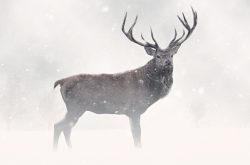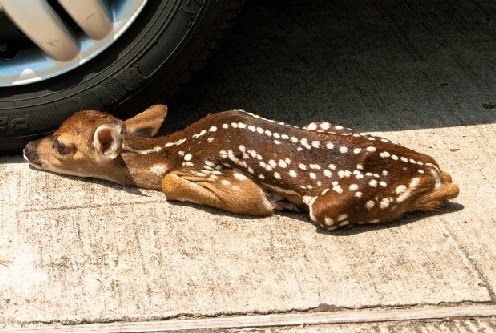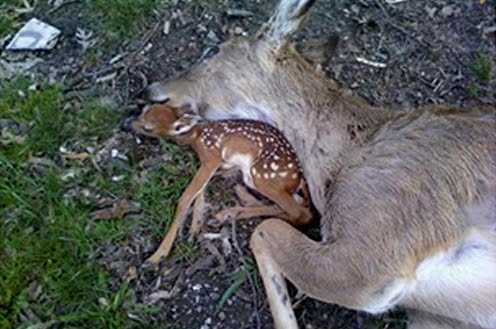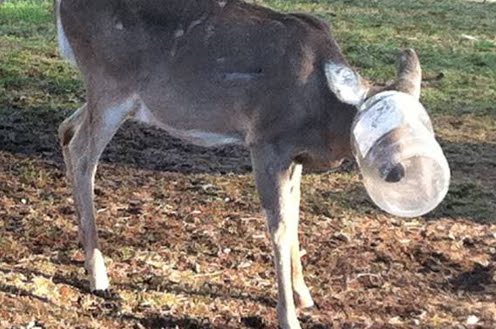
RELEVANT NATURAL HISTORY
The White-Tailed Deer is a tall graceful animal, with large ears and very long thin legs. The most noticeable identifying detail is their tails; brown on the top and white underneath. When startled or alarmed the tail goes up as a warning, and the white of the tail is visible as they flee from the area.
Deer vary in coloration seasonally. Their coats are a reddish-brown or tan with short thin hairs in summer, transitioning to a more grayish brown to gray in winters with long thick hairs. Fawns are reddish brown with white spots until they are three to four months old when the spots disappear.
Deer prefer field and forest edges, woodlands with an understory of herbaceous vegetation. Their diet varies with the seasons. They will consume grasses and herbaceous flowering plants in spring and summer. In fall they consume acorns, and other available fruits and nuts.

Winters can be harsh and deer resort to eating twigs and buds from a wide variety of hardwood trees, as well as, leaves from conifer trees such as white pine and hemlock. They also have a keen appetite for flowers and garden fruits and vegetables, which can lead to conflicts with people.

Male deer (Bucks) develop antlers in spring, and lose them in late fall/early winter after rutting (mating) season. Fawns are usually born in June and weigh anywhere from four to eight pounds. The number of offspring per doe ranges from one to three, two being the most common in CT. The fawns are cared for by their mothers for about three months, at which time they are fully weaned.




